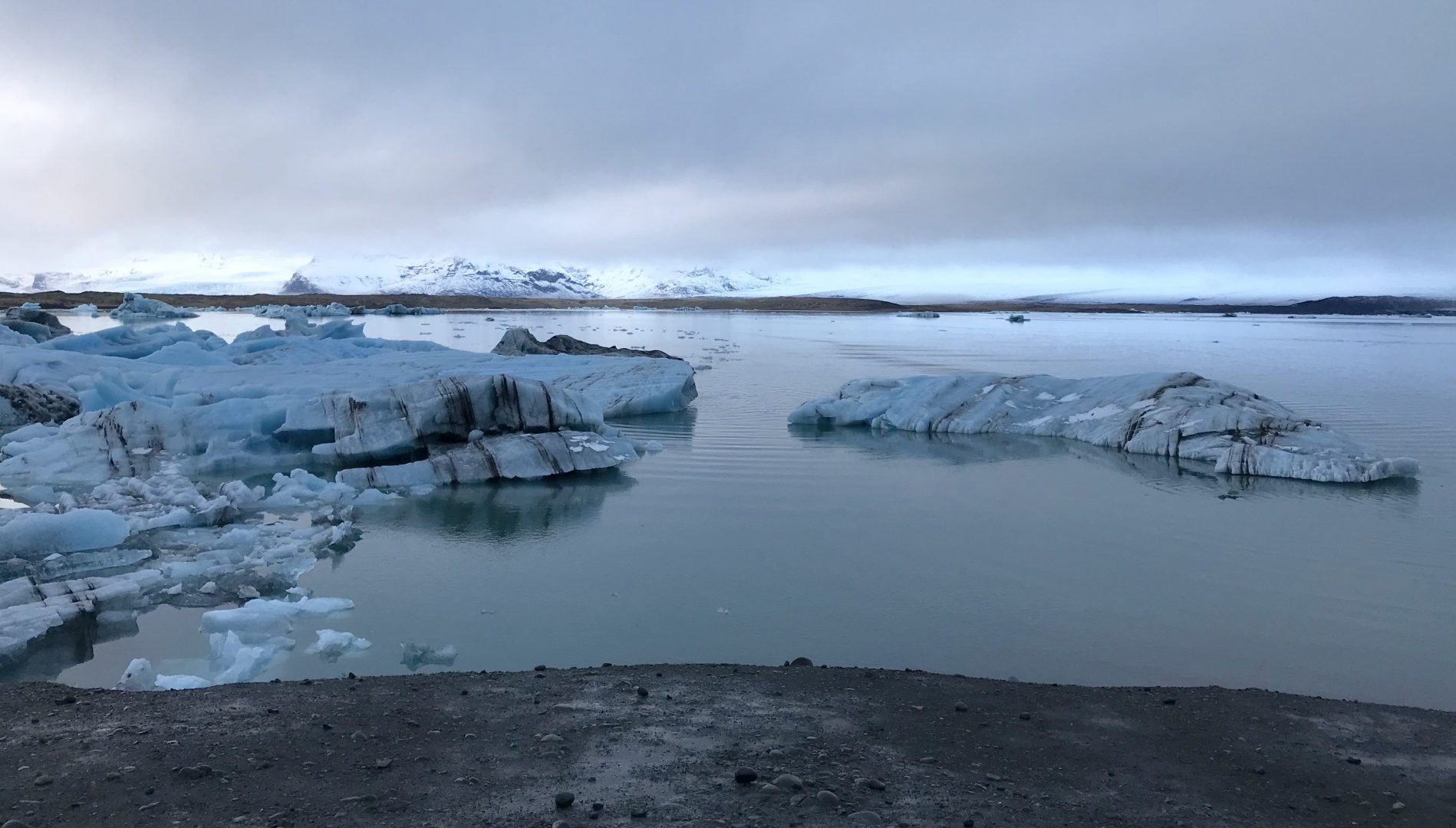
The Jökulsárlón glacial lagoon in southeastern Iceland.
Marie Cusick/ StateImpact Pennsylvania


The Jökulsárlón glacial lagoon in southeastern Iceland.
Marie Cusick/ StateImpact Pennsylvania

Marie Cusick/ StateImpact Pennsylvania
The Jökulsárlón glacial lagoon in southeastern Iceland.
Social media platforms are often criticized for being partisan echo chambers, but new research shows they can be designed to get Democrats and Republicans to talk to each other.
And those interactions can help them better understand complex, controversial topics, like climate change.
In a new study published in the Proceedings of the National Academy of Sciences researchers had 2,400 Democrats and Republicans interpret climate change data. Participants were given a graph showing average monthly sea ice from 1979 through 2013 and asked to forecast the amount of sea ice in the year 2025.
At first, nearly 40 percent of Republicans incorrectly thought Artic sea ice was increasing and 26 percent of Democrats made the same mistake.
Damon Centola, an associate professor in the Annenberg School for Communication at the University of Pennsylvania, co-authored the new study.
“Just because you give people information doesn’t mean they interpret it in the right way,” he said. “In fact, the same information clearly was interpreted in the exact opposite way by the Republicans and the Democrats.”
However, after the participants could interact on anonymous, bipartisan social media networks and swap ideas about the data, 88 percent of Republicans and 86 percent of Democrats correctly analyzed it—forecasting that sea ice would decline.
“If we can build these kinds of social spaces effectively, we can generate network contexts that will allow people to talk across the political aisle,” said Centola. “That will result in greater understanding of topics like climate change.”
However, the study also has a cautionary tale.
When participants interacted on a social network where partisan symbols were displayed, the polarization remained, and their inaccurate conclusions stuck. The only difference between the two scenarios was a picture of an elephant or a donkey somewhere on their screens.
Centola said polarization is not caused by people coming into contact with differing views. Rather, the contact happens within a social context where things are politicized.
“And that generates an entrenchment into people’s camps,” he said. “This translates not in just social media, but really any kind of media, like CNN or Fox, where you have people talking about their views on contentious political topics, like climate change, but at the same time you’re displaying party symbols or political imagery on the screen, and this undermines all the social learning that could take place.”
He said although social media is rife with political imagery, companies like Facebook and Twitter are seriously examining how to curate their online environments, and he’s hopeful about new social media spaces being built, which could be more sensitive to what science is revealing about social learning.
StateImpact Pennsylvania is a collaboration among WITF, WHYY, and the Allegheny Front. Reporters Reid Frazier, Rachel McDevitt and Susan Phillips cover the commonwealth’s energy economy. Read their reports on this site, and hear them on public radio stations across Pennsylvania.
(listed by story count)
StateImpact Pennsylvania is a collaboration among WITF, WHYY, and the Allegheny Front. Reporters Reid Frazier, Rachel McDevitt and Susan Phillips cover the commonwealth’s energy economy. Read their reports on this site, and hear them on public radio stations across Pennsylvania.
Climate Solutions, a collaboration of news organizations, educational institutions and a theater company, uses engagement, education and storytelling to help central Pennsylvanians toward climate change literacy, resilience and adaptation. Our work will amplify how people are finding solutions to the challenges presented by a warming world.